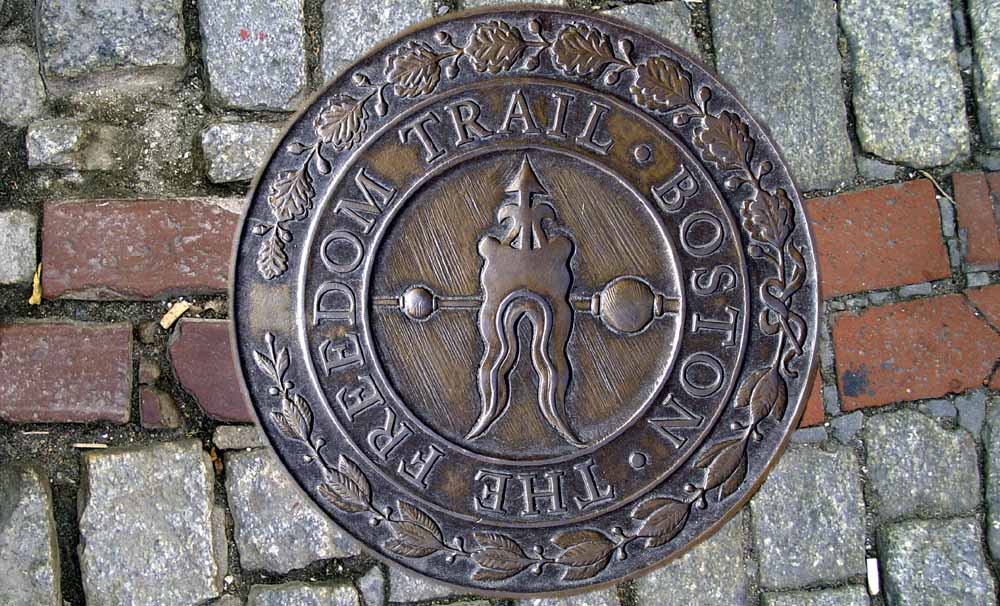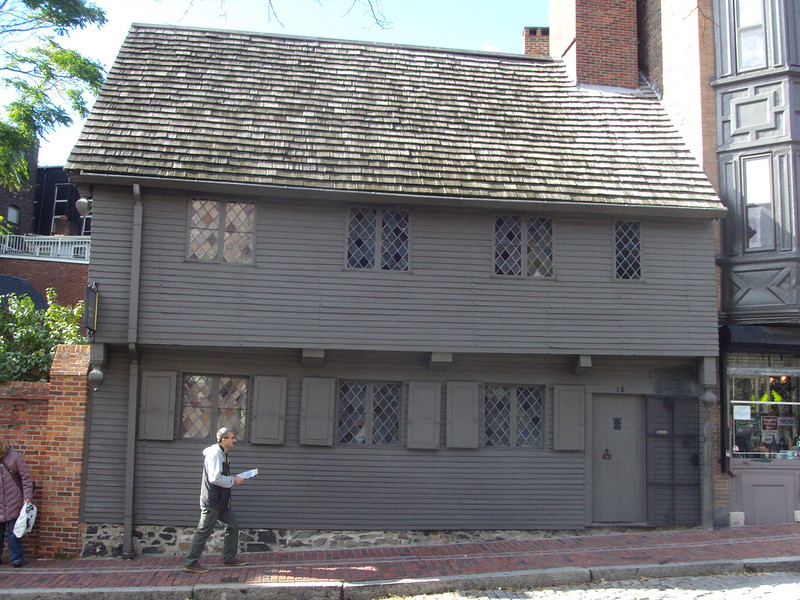Sixteen historic sites in Boston remind Americans of the events that led to our nation’s birth, from the Boston Massacre to Breed's Hill and the USS Constitution.
-
July/August 2020
Volume65Issue4
Editor's Note: Brent Glass is Director Emeritus of the Smithsonian’s National Museum of American History and the author of 50 Great American Places: Essential Historic Sites Across the U.S., from which this essay is adapted.

For more than a decade before the Continental Congress adopted the Declaration of Independence in Philadelphia in July 1776, Boston was the center of colonial resistance against British rule. A walking tour of Revolutionary War sites—the Freedom Trail—provides dramatic evidence of the extraordinary events that set the stage for the conflict that finally ended with the British surrender in Yorktown, Virginia, in 1781 and the Treaty of Paris of 1783.
The Freedom Trail is a 2.5-mile route that begins in downtown Boston, crosses the Charles River, and ends at the Bunker Hill Monument. This route includes sixteen sites of events ingrained in America's collective memory, such as the Boston Massacre, the Boston Tea Party, Paul Revere's Ride, and the Battle of Bunker Hill. The trail starts at the Boston Common, where Bostonians celebrated the repeal of the Stamp Act in 1765 and where the British headquartered during their occupation of the city from 1768 to 1776.
The first clash between these troops and city residents came on March 5, 1770. A petty argument between a British soldier and a barber's apprentice sparked a confrontation between a jeering mob and nine British soldiers near the Old State House, the center of the royal government. Within minutes, the troops fired on the boisterous crowd, killing five men—including an African American, Crispus Attucks—and wounding several more. The Boston Massacre provoked protests and meetings in which Samuel Adams and others called for the withdrawal of British troops and for independence for the American colonies.
See "Rethinking the Boston Massacre" by Eric Hinderaker
John Adams, Samuel's cousin, took a more moderate approach. He agreed to defend the British soldiers who had been charged with murder, won their acquittal, and emerged as a major spokesman for Boston and Massachusetts. His legal training, powerful intellect, and riveting speaking style made him an ideal leader for the American cause. As tensions grew in the 1770s, Adams accepted that American independence was inevitable. He represented Massachusetts at both Continental Congresses in Philadelphia, and coauthored the Declaration of Independence with Thomas Jefferson and Benjamin Franklin. He served as ambassador to England in the 1780s, then as first vice president and second president of the United States. Few people in our history can match his superb record of public service during America's formative years.
Map courtesy of thefreedomtrail.org
Nearly four years after the Boston Massacre, another protest — the Boston Tea Party — became the defining moment of colonial resistance. This was a planned event, organized by a group called the Sons of Liberty in response to a British law that gave a monopoly on the sale of tea to the East India Company, a corporation closely aligned with the British governor of Massachusetts. On the evening of December 16, 1773, around 120 men and boys dressed as Mohawk Indians marched from the Old South Meeting House to Griffin's Wharf, boarded three ships, and threw 342 chests of tea into Boston Harbor. The loss to the East India Company was the equivalent of $1 million today. As punishment for the Tea Party, the British closed Boston's port, restricted ferries, and abolished local government.
See "The Sparck of Rebellion" about the Boston Tea Party, by Douglas Brinkley
The center of the Tea Party protest and other public meetings was Faneuil Hall, a market and meeting place built in 1742. Colonists began gathering at this site in the 1760s to protest various British laws and to debate political issues. The funeral service for the Boston Massacre victims took place there and the Boston Committee of Correspondence, organized to communicate events and opinions to other towns and colonies, started there. Even after the revolution, Faneuil Hall continued to function as a place for public debate. Throughout the nineteenth century, advocates for the abolition of slavery, woman suffrage, and temperance rallied for their causes at the hall.
Highways and parkland now cover the actual site of the Boston Tea Party; however, other stops on the Freedom Trail include buildings that are rare survivors of the Revolutionary period. The Paul Revere House on North Square is one of those places. Revere and his large family lived here while he worked as a silversmith in a nearby shop. A true hero of the American cause for liberty, he joined Boston's political groups and promoted the resistance movement by producing copper plate engravings of the Boston Massacre and other events. He also served as a messenger for the Committee of Correspondence, riding thousands of miles to bring news of events in Boston and alerting colonists of British activities there. His most celebrated ride was on April 18, 1775, to Lexington and, the next day, to Concord. The warnings by Revere, sixteen-year-old Sybil Ludington, and other riders about advancing British troops gave the Americans time to prepare and win significant victories. The American Revolution had begun!

For the next year, the conflict continued around Boston. The British victory at Breed's Hill in Charlestown came only after the British sustained heavy losses. The Bunker Hill Monument, another stop on the Freedom Trail, commemorates this major battle.
George Washington arrived in July 1775 and organized a siege that cut British access to supplies and reinforcements. On March 17, 1776, they abandoned Boston and shifted their attention to strategic targets in New York, New Jersey, and Pennsylvania.
There are two more noteworthy stops on the Freedom Trail that commemorate later wars. The first is the USS Constitution, the warship launched in 1797 that protected merchant ships from North African pirates and later fought in significant victories against British ships in the War of 1812.
Read articles about the USS Constitution
The second is the Shaw Memorial, across from the Massachusetts State House. Designed by Augustus Saint-Gaudens and dedicated in 1897, the memorial commemorates the leadership of Colonel Robert Gould Shaw and the courageous service of African American troops in the 54th Massachusetts Regiment in the Civil War.
The history of the Freedom Trail itself is a good example of historic preservation. In 1951, a journalist, Bill Schofield, and a local historian, Bob Winn, started a campaign to recognize Boston's rich concentration of historic places with plaques, brochures, and memorials. By 1958, the trail had attracted thousands of visitors, and a local businessman, Dick Berenson, proposed painting a red line to help visitors follow the trail. This was done and the red line remains today. Information centers, gift shops, and guided tours followed. Several million people each year explore the Freedom Trail and discover the remarkable stories of people seeking and fighting for the liberty to govern themselves.
Websites for More Information:
- The Freedom Trail, www.thefreedomtrail.org
- USS Constitution, www.ussconstitutionmuseum.org
- Robert Gould Shaw and Massachusetts 54th Regiment Memorial,
- www.nps.gov/boaf/learn/historyculture/shaw.htm
- Lexington and Concord, vvvvvv.nps.gov/mima
Nearby Places Worth Visiting:
- Walden Pond State Reservation
- The Mary Baker Eddy Library
- Museum of Fine Arts, Boston
- Adams National Historical Park

